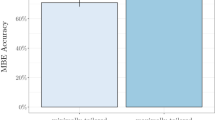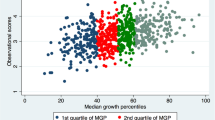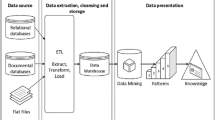Abstract
The ECTS, European Credit Transfer System, is now widely used throughout higher education institutions as it facilitates student mobility within Europe and the comparison of study programs and courses. Most European institutions provide students with the number of ECTS each course and module is worth. A full-time student needs to complete 60 ECTS per academic year, which represents about 1500 to 1800 h of study. However, there is a lack of research showing that ECTS metrics have been properly implemented in different degrees and universities. The aim of this paper is to assess the relevance of the ECTS metric as a valid indicator of students’ and courses’ workloads. Detailed workload measurements have been taken in two Spanish universities, with 250,000 work hours monitored from 1400 students. This is the first study published with such a large dataset that includes a range of simultaneous courses and throughout a whole semester. Empirical distribution functions of workload indicators have been obtained. Evidence is provided indicating that nominal ECTS credit hours may be overestimated, that the variability of student workload could be too large for ECTS to sensibly characterize course workload, and that workload statistics of courses with same nominal ECTS are generally not comparable. Although the ECTS metric conception seems to be a valid metric to facilitate mobility between different institutions and higher education systems, in practice, according to this study, it requires revision, at least in the two institutions that have been included in this study. Further studies like the present one are required to test if this is a broader problem that has implications for the comparability of degrees across Europe.






Similar content being viewed by others
Change history
23 May 2018
The original version of this article unfortunately contained a mistake. The name “Antonio Souto-Inglesias” should be corrected to “Antonio Souto-Iglesias”.
References
Abad, R. (1998). Estudio de los movimientos del buque y su amortiguación por estabilizadores pasivos, E.T.S.I.N., UPMadrid.
Aneca. (2004). Libro Blanco. Título de Grado en Ingeniería Informática (in Spanish). City: Maite.
Aneca. (2005). Libro Blanco. Título de Grado en Economía y en Empresa (in Spanish). City: Madrid.
Aneca. (2006). Libro Blanco. Titulaciones de Ingeniería Rama Industrial (Propuesta Escuelas Técnicas Superiores de Ingeniería Industrial) (in Spanish). City: Madrid.
Arana, J. M., Mayor, M. A., Zubiauz, B. Y., & Palenzuela, D. L. (2005). The adaptation of three subjects from the first year of psychology studies of the University of Salamanca (Spain) for teaching within the framework of the European Credit Transfer System (ECTS). European Psychologist, 10(2), 160–164.
Astin, A. W. (1987). Competition or cooperation?: teaching teamwork as a basic skill. Change: The Magazine of Higher Learning, 19(5), 12–19.
Bachman, L., & Bachman, C. (2006). Student perceptions of academic workload in architectural education. Journal of Architectural and Planning Research, 23(4), 271+−271+.
Baeza-Romero, M. T., Andres-Abellan, F., Carrion, M., Diaz, A., Lozoya, C., Payo, I., Ramiro-Redondo, C., Sanchez, L., Garcia, B., Parras, J., Rodriguez, M. A., Escobar, E., & Souto-Iglesias, A. (2013) Monitorización del trabajo realizado por estudiantes de Ingeniería a través de comparación de medidas realizadas en dos universidades. Presented at XXI CUIEET, Congreso Universitario de Innovación Educativa en las Enseñanzas Técnicas.
Baeza-Romero, M. T., Andres-Abellan, F., Carrion, M., Diaz, A., Lozoya, C., Payo, I., Ramiro-Redondo, C., Sanchez, L., Garcia, B., Parras, J., Rodriguez, M. A., Escobar, E., & Souto-Iglesias, A. (2014) Observatorio de tiempo para estudiantes de Ingeniería. Presented at XXII CUIEET, Congreso Universitario de Innovación Educativa en las Enseñanzas Técnicas.
Barjola-Valero, P., Gómez-Esquer, F., Gonzalez-Gutierrez, J. L., Lopez-Lopez, A., Mercado-Romero, F., & Rivas-Martinez, I. (2014). Crédito ECTS: ?`Realidad o ficción? (in Spanish). Bordón Revista de Pedagogía, 63(2), 75–90.
Bartual-Figueras, T., & Poblet-Farrés, M. C. (2009). Determinantes del rendimiento académico en estudiantes universitarios de primer año de Economía (in Spanish). Revista de Formación e Innovación Educativa Universitaria, 2(3), 172–181.
Breton, G. (1999). Some empirical evidence on the superiority of problem based learning (PBL) method. Accounting Education: an International Journal, 8(1), 1–12.
Chambers, E. (1984). A project component in architectural history. In E. S. H. M. Nathenson, (Ed.), Independent Learning in Higher Education.
Chambers, E. (1992). Work-load and the quality of student learning. Studies in Higher Education, 17(2), 141–153.
Commission, E. (1998). European Credit-Transfer System ECTS. Userś Guide.
Darmody, M., Smyth, E., & Unger, M. (2008). Field of study and students ́workload in higher education: Ireland and Austria in comparative perspective. International Journal of Comparative Sociology, 49, 329+−329+.
Dunne, E., & Rawlins, M. (2000). Bridging the gap between industry and higher education: training academics to promote student teamwork. Innovations in Education & Training International, 37(4), 361–371.
Greengard, L., & Rokhlin, V. (1987). A fast algorithm for particle simulations. Journal of Computational Physics, 73(2), 325–348.
Greenwald, A. G., & Gillmore, G. M. (1997). No pain, no gain? The importance of measuring course workload in student ratings of instruction. Journal of Education & Psychology, 89(4), 743+−743+.
Higher Education Policy Institute, U. K., and Higher Education Academy, U. K. (2015). The 2015 Student Academic Experience Survey.
Higher Education Policy Institute, U. K., and Higher Education Academy, U. K. (2016). The 2016 Student Academic Experience Survey.
Jackson, D. L., Teal, C. R., Raines, S. J., Nansel, T. R., Force, R. C., & Burdsal, C. A. (1999). The dimensions of students ́perceptions of teaching effectiveness. Educational and Psychological Measurement, 59(4), 580–596.
Jano-Salagre, D., & Ortiz-Serrano, S. (n.d.)Determinación de los Factores que Afectan al Rendimiento Académico en la Educación Superior (in Spanish). Presented at XII Jornadas de la Asociación de Economía de la Educación.
Jay, J. (2011) User behaviour in a virtual learning management system, and the lessons to be learnt. Presented at 5th International Technology, Education and Development Conference, INTED2011.
Karjalainen, A., Alha, K., & Jutila, S. (2006). Give me time to think : determining student workload in higher education; has been written as part of the project titled Five years, two degrees, funded by the Ministry of Education, 2004–2006. Oulu Finland: Oulu University Press.
Kember, D. (2004). Interpreting student workload and the factors which shape students ́perceptions of their workload. Studies in Higher Education, 29(2), 165–184.
Kember, D., & Leung, D. Y. P. (2006). Characterising a teaching and learning environment conducive to making demands on students while not making their workload excessive. Studies in Higher Education, 31(2), 185–198.
Kember, D., Sandra, N. G., Harrison, T. S. E., Wong, E. T. T., & Pomfret, M. (1996). An examination of the interrelationships between workload, study time, learning approaches and academic outcomes. Studies in Higher Education, 21(3), 347–358.
Krzin-Stepisnik, J., Kolar, O., Trunk-Sirca, N., & Lesjak, D. (2007) Student workload-student or teacher responsibility: case study in higher education, Slovenia. Presented at 20th International Congress for School Effectiveness and Improvement (ICSEI).
Kvam, P. H., & Vidakovic, B. (2007). Nonparametric Statistics with Applications to Science and Engineering (Wiley Series in Probability and Statistics): Wiley-Interscience.
Kyndt, E., Berghmans, I., Dochy, F., & Bulckens, L. (2014). Time is not enough.? Workload in higher education: a student perspective. Higher Education Research & Development, 33(4), 684–698.
Lawless, C. (2000). Using learning activities in mathematics: workload and study time. Studies in Higher Education, 25(1), 97–111.
Martínez, R. J., & Moreno, R. (2007). Validity of academic work indicators in the projected European Higher Education Area. Higher Education, 53(6), 739–747.
McDaniel, E. (2011). Level of student effort should replace contact time in course design. Journal of Information Technology Education: Innovations in Practice, 10, 249–254.
Millot, B., & Lane, J. (2002). The efficient use of time in education. Education Economics, 10(2), 209–228.
Ministerio de Educación, C. y. D. (2015). Datos y Cifras del sistema universitario Español. Curso 2014-15., S. G. d. U. S. G. d. C. y. S. Universitario, (ed.). City: Madrid.
Nosair, E., & Hamdy, H. (2017). Total student workload: implications of the European Credit Transfer and Accumulation System for an integrated, problem-based medical curriculum. Health Professions Education, 3(2), 99–107.
Rozman, L., Jost-Leser, V., Trunk-Sirca, N., Dermol, V., & Skrbinjek, V. (2014) Assessing student workload: tough nut to crack. Presented at MakeLearn Conference `Human Capital without Borders: Knowledge and Learning for Quality of Life.
Ruiz-Gallardo, J.-R., Valdes, A., & Castaño, S. (2006). Practicum y carga de trabajo (in Spanish). Revista de Investigacion Educativa, 24(2), 557–574.
Ruiz-Gallardo, J.-R., Castaño, S., Gomez-Alday, J. J., & Valdes, A. (2011). Assessing student workload in problem based learning: relationships among teaching method, student workload and achievement. A case study in Natural Sciences. Teaching and Teacher Education, 27(3), 619–627.
Ruiz-Gallardo, J.-R., González-Geraldo, J. L., & Castaño, S. (2016). What are our students doing? Workload, time allocation and time management in PBL instruction. A case study in Science Education. Teaching and Teacher Education, 53, 51–62.
Schuman, H., Walsh, E., Olson, C., & Etheridge, B. (1985). Effort and reward: the assumption that college grades are affected by quantity of study. Social Forces, 63(4), 945–966.
Seaton, B., Vogel, R. H., & Pell, S. W. J. (1980). Student preferences for instructors in higher education. The Journal of Experimental Education, 48(3), 223–230.
Souto-Iglesias, A. (2013). Sobre el ratio trabajo / crédito ECTS III Congreso Internacional de Docencia Universitaria. City: Vigo.
Spronken-Smith, R. (2005). Implementing a problem-based learning approach for teaching research methods in geography. Journal of Geography in Higher Education, 29(2), 203–221.
Toland, M. D., & De Ayala, R. J. (2005). A multilevel factor analysis of students ́evaluations of teaching. Educational and Psychological Measurement, 65(2), 272–296.
Van-Damme, D. (2001). Quality issues in the internationalisation of higher education. Higher Education, 41(4), 415–441.
Watkins, D., & Gerong, A. (1992). Evaluating undergraduate college teaching: a Filipino investigation. Educational and Psychological Measurement, 52(3), 727–734.
Watkins, R., & Schlosser, C. (2000). Capabilities-based educational equivalency units: beginning a professional dialogue. American Journal of Distance Education, 14(3), 34–47.
Watkins, R., & Schlosser, C. (2003). It’s not about time: a fresh approach to educational equivalency. TechTrends, 47(3), 35.
Winer, L. R., Berthiaume, D., & Arcuri, N. (2004). A case study of changing the learning environment in law: introducing computer-supported collaborative activities. Educational Research and Evaluation, 10(4–6), 441–472.
Zuriff, G. E. (2003). A method for measuring student study time and preliminary results. College Student Journal, 37(1).
Acknowledgements
We want to thank all students and lecturers involved in this study.
Funding
This work has been funded in part by the Education Innovation Projects call 2011 by Universidad Politécnica de Madrid and the 8th Education Innovation Projects call of the Universidad de Castilla-La-Mancha.
Author information
Authors and Affiliations
Corresponding author
Additional information
The original version of this article was revised: The original version of this article unfortunately contained a mistake. The name “Antonio Souto-Inglesias” should be corrected to “Antonio Souto-Iglesias”. The correct name is now shown here.
Rights and permissions
About this article
Cite this article
Souto-Iglesias, A., Baeza_Romero, M.T. A probabilistic approach to student workload: empirical distributions and ECTS. High Educ 76, 1007–1025 (2018). https://doi.org/10.1007/s10734-018-0244-3
Published:
Issue Date:
DOI: https://doi.org/10.1007/s10734-018-0244-3




